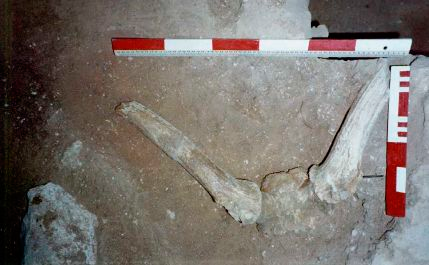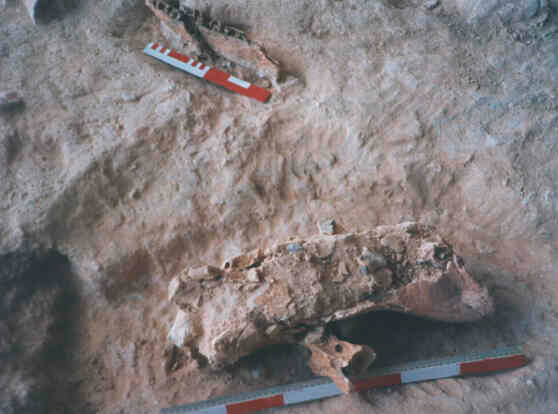Palaeoenvironment and biodiversity at Cueva Negra
We have identified a very wide range of flora and fauna at Cueva Negra. It points to damp, temperate conditions with lakes and swamps close to the cave, where none exist today. Pollen identified by palaeopalynologist Dr José Carrión García shows that they were fringed by deciduous trees that nowadays are scarce in the valley near the cave (Portuguese oak, hazel, beech, elm, willow, ash, etc.) as well as the evergreens (pines, holm oak, maple, yew, wild olive, junipers, pistachio, etc.) that predominate today. Among over 60 bird species identified by avian palaeontologist Anne Eastham there were 8 species of waterfowl, including diving ducks that require deep water; except for the mallard none of the other species is present in the neighbourhood today. Fish, frog and lizard bones have been recovered and an ancestral form of tortoise is abundant. Smaller mammals include very numerous remains of several species of extinct Arvicolid rodents, fieldmouse, edible dormouse, hamster, bats, hedgehog, pika, rabbit, and perhaps hare. Larger mammals include macaque, wild goat/ibex, extinct fallow deer, extinct giant deer, bison, wild boar, a wild horse, a precursor of aurochs, rhinoceros and mammoth, though there are only a very few remains of carnivores such as bear, hyaena, lynx, a precursor of wolf, fox, badger, wild cat (and for that matter, large carnivorous birds such as eagles are infrequent also, whereas nowadays they are fairly common). Here we see part of the skull and crown beam antlers of the extinct giant deer which is Megaloceros aff. savini according to palaeontologist Dr Jan van der Made of the National Natural Science Museum at Madrid who is an expert authority on cervids:
Here we see 3 chert artifacts on a rhino skull, mandible, and vertebra of Stephanorhinusetruscus






